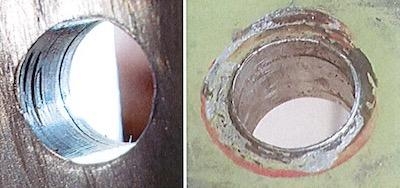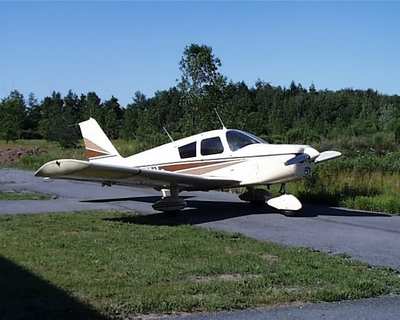Stems From A Fatigue Crack Found In The Lower Main Wing Spar Cap On A Piper Model PA-28R-201
The FAA last month proposed an AD for multiple Piper models after receiving a report of a fatigue crack found in the lower main wing spar cap on a Piper Model PA-28R-201 airplane. An investigation revealed that repeated high-load operating conditions accelerated the fatigue crack growth in the lower main wing spar cap. In addition, because of the structural configuration of the wing assembly, the cracked area was inaccessible for a visual inspection. Model PA-28-140, PA-28-150, PA-28-151, PA-28-160, PA-28-161, PA-28-180, PA-28-181, PA-28-235, PA-28R-180, PA-28R-200, PA-28R-201T, PA-28RT-201, PA-28RT-201T, PA-32-260, and PA-32-300 airplanes have similar wing spar structures as the Model PA-28R-201.

Airplanes used in training and other high-load environments are typically operated for hire and have inspection programs that require 100-hour inspections. We determined the number of 100-hour inspections an airplane has undergone is the best indicator of the airplane's usage history. Using the criteria in FAA Advisory Circular AC 23-13A, “Fatigue, Fail-Safe, and Damage Tolerance Evaluation of Metallic Structure for Normal, Utility, Acrobatic, and Commuter Category Airplanes,” which you can find here, the FAA developed a factored service hours formula based on the number of 100-hour inspections completed on the airplane. A review of the airplane maintenance records to determine the airplane's usage and the application of the factored service hours formula will identify when an airplane meets the criteria for the proposed eddy current inspection of the lower main wing spar bolt holes.
Only an airplane with a main wing spar that has a factored service life of 5,000 hours, has had either main wing spar replaced with a serviceable main wing spar (more than zero hours TIS), or has airplane maintenance records that are missing or incomplete, must have the eddy current inspection.
The FAA said that the condition, if not addressed, could result in the wing separating from the fuselage in flight.
This proposed AD would require reviewing the airplane maintenance records to determine the number of 100-hour inspections completed on each installed main wing spar and using the number of 100-hour inspections to calculate the factored service hours for each main wing spar. This proposed AD would also require inspecting the lower main wing spar bolt holes for cracks once a main wing spar exceeds the specified factored service hours and replacing any main wing spar when a crack is indicated. This proposed AD would only apply when an airplane has either accumulated 5,000 or more hours time-in-service (TIS); has had either main wing spar replaced with a serviceable main wing spar (more than zero hours TIS); or has missing and/or incomplete maintenance records.
The cost to replace the wing spar, if necessary, is estimated to be $8,260 for parts and labor.

In its comments on the proposed AD (linked below), Piper recommends that the FAA convert it to an SAIB.
Piper says that unnecessarily removing the wings or wing attachment fasteners on this large quantity of aircraft causes a high potential for unintended damage which will then lead to a new safety concern for the FAA, Piper and the tens of thousands of owner operators flying the aircraft. As this damage would create a continued operational safety issue it is imperative that the model series be reduced by limiting the scope of the inspections to a smaller, more relevant representative group.
Piper contends that, similar to the original AD 87-08-08 which was ultimately rescinded by the FAA, the inspections proposed by this "interim" NPRM AD will again show that no cracks will be found in the subject areas based on analysis and test data and potentially introduce an "unsafe condition". As such, this NPRM AD activity is not warranted due to the misuse of the regulatory approach, deficiencies of the proposal's technical merit, excessive economic impact factors and overly broad expanse of aircraft currently proposed.
It's a lengthy comment document, and recommended reading for any owner or operator of one of the affected aircraft.
(Images from Piper resonse to FAA NPRM AD and from file)
 Aero-News: Quote of the Day (07.11.25)
Aero-News: Quote of the Day (07.11.25) ANN's Daily Aero-Term (07.11.25): Permanent Echo
ANN's Daily Aero-Term (07.11.25): Permanent Echo ANN's Daily Aero-Linx (07.11.25)
ANN's Daily Aero-Linx (07.11.25) NTSB Final Report: Schweizer SGS 2-33A
NTSB Final Report: Schweizer SGS 2-33A NTSB Prelim: Aeronca 7AC
NTSB Prelim: Aeronca 7AC




